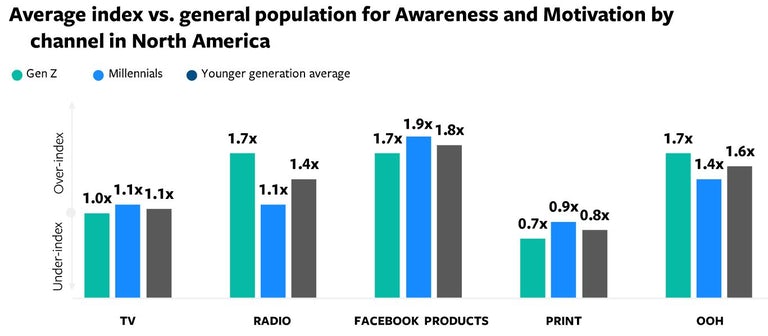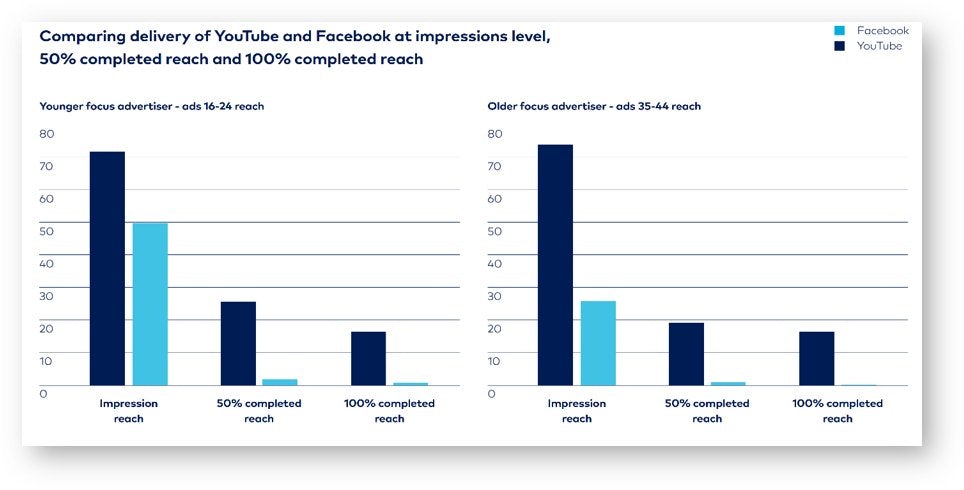Source: Demand Generation, Nov 2019 Mediacom/Wavemaker/Gain Theory
Variability in return on investment isn’t a bad thing in itself. It just means that before investing heavily in this channel, advertisers need to ensure they can reach the right end of the ROI range.
Facebook’s own research is useful in that it offers insight into how to optimise copy. This is no doubt important: social advertising is uniquely shareable and really good content gets amplified when users engage.
The key recommendation is to make an impact in the first second of the ad. This is because people consume facebook content by quickly scrolling through the feed on their mobile. On average, users spend only 1.7 seconds with each item of facebook content, so it’s critical to front load creatives and get the message in early.
On the chewier question of when to use the platform and when to avoid it, evidence from econometrics projects is helpful. This uniquely allows a comparison of effectiveness across media channels, and untangles indirect effects like a TV ad driving people to click on a facebook ad. With a more accurate view of ROI in hand, it’s clear that there are some types of advertiser that should consider avoiding social even in normal times.
In our database of past projects, it is low interest categories – insurance, politics, banking, and toilet paper – that see small effects of social advertising and so investment that sometimes doesn’t pay back. On the other hand, high interest categories like beer, TV, and video games see much bigger effects. And there are similar patterns in the data behind the chart above. As Matthew Chappell from Gain Theory put it:
“There were stand-out cases in most categories but there does appear to be some statistically significant skew towards higher interest goods like cars and high interest FMCG – plus, as you’d expect, companies who sell more online do better on social”
The demographic of the target audience matters too. The chart below shows that younger people are more likely to be persuaded by advertising on facebook versus other channels. In our experience, the converse is also true. Older people are much less likely to be convinced on this channel.




